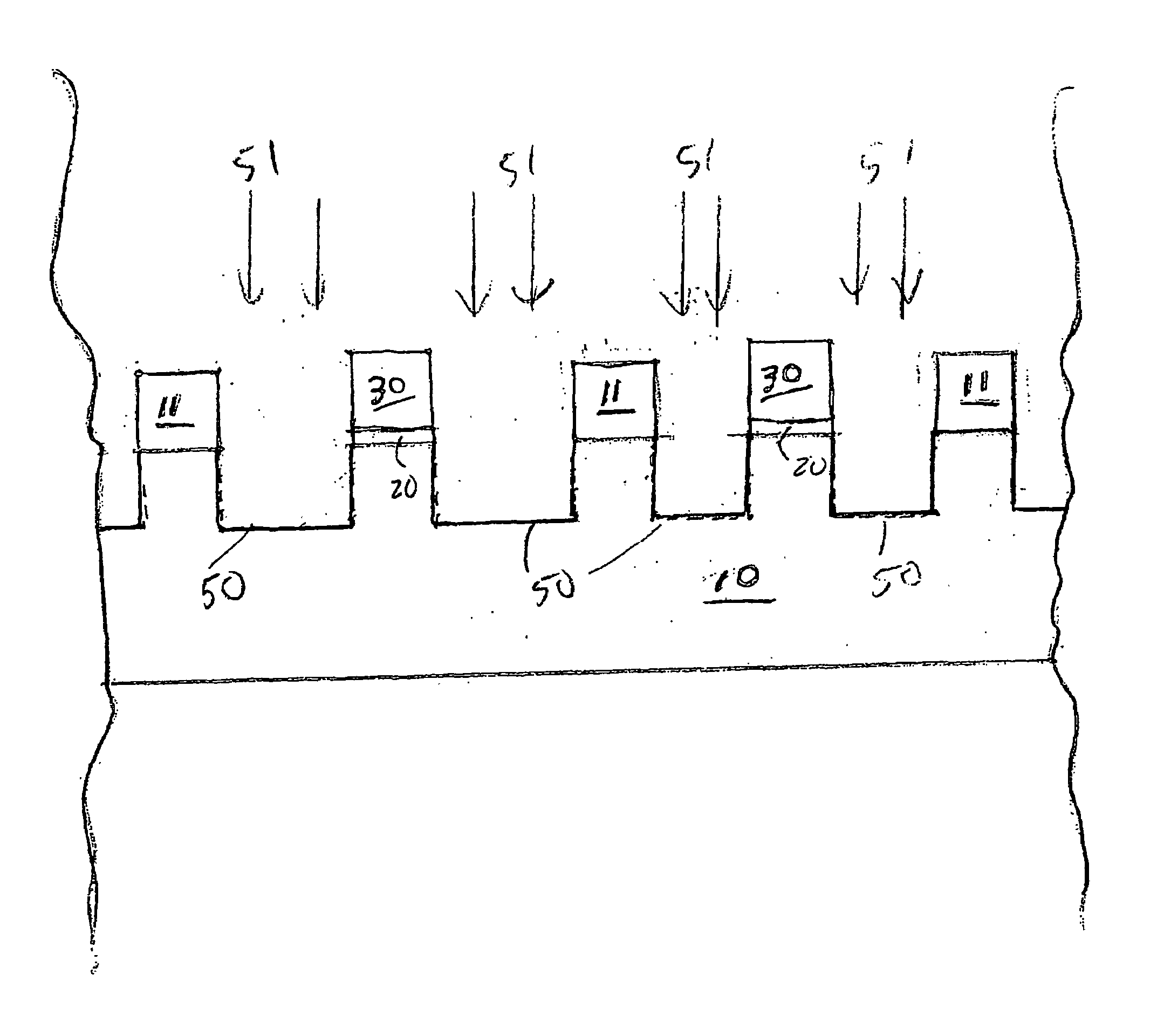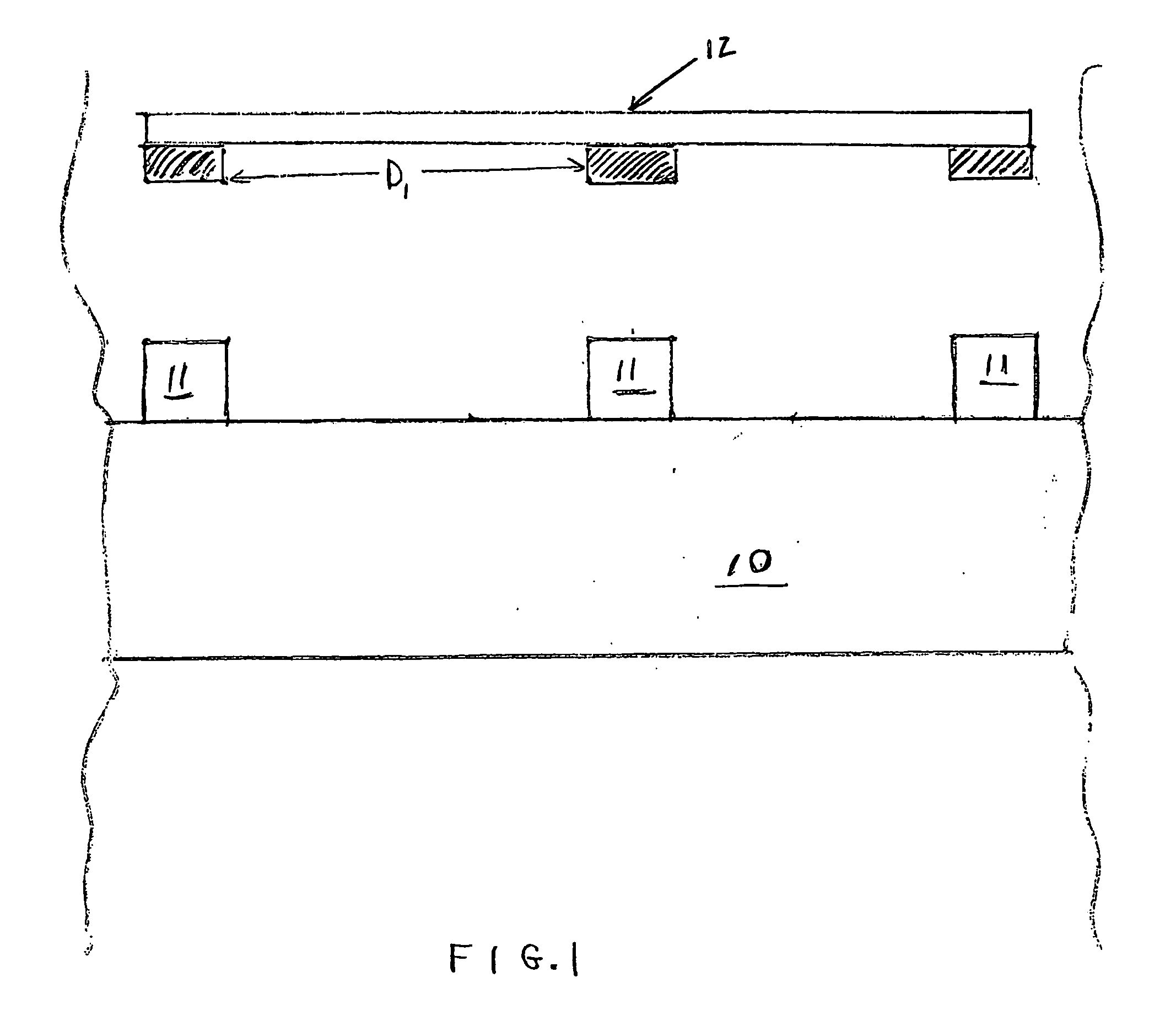Double exposure technology using high etching selectivity
a selective etching and double exposure technology, applied in the direction of photosensitive materials, instruments, photomechanical equipment, etc., can solve the problem of becoming increasingly difficult to form features with high dimensional accuracy, and achieve the effect of high etch selectivity
- Summary
- Abstract
- Description
- Claims
- Application Information
AI Technical Summary
Benefits of technology
Problems solved by technology
Method used
Image
Examples
Embodiment Construction
[0014]The present invention addresses and solves problems attendant upon fabricating semiconductor devices comprising features with accurately formed dimensions in the decananometer range, e.g., with device features of 45 nm and under, features used for 65 nm technology or beyond, such as len than 90 nm half pitch, line end shortening, line-to-printing, and T-shape printing. These problems stem from dimensional restrictions imposed by the chemical and optical limits of conventional lithography systems and distortions of feature shape, such as corner rounding when forming negative features in a target substrate. The present invention provides methodology enabling the formation of various types of semiconductors having such ultrafine features with high dimensional accuracy, in an efficient manner and in a single tool, thereby reducing manufacturing costs and increasing manufacturing throughput.
[0015]In accordance with embodiments of the present invention, a double exposure technique i...
PUM
| Property | Measurement | Unit |
|---|---|---|
| distance | aaaaa | aaaaa |
| dielectric constant | aaaaa | aaaaa |
| antireflective | aaaaa | aaaaa |
Abstract
Description
Claims
Application Information
 Login to View More
Login to View More - R&D
- Intellectual Property
- Life Sciences
- Materials
- Tech Scout
- Unparalleled Data Quality
- Higher Quality Content
- 60% Fewer Hallucinations
Browse by: Latest US Patents, China's latest patents, Technical Efficacy Thesaurus, Application Domain, Technology Topic, Popular Technical Reports.
© 2025 PatSnap. All rights reserved.Legal|Privacy policy|Modern Slavery Act Transparency Statement|Sitemap|About US| Contact US: help@patsnap.com



